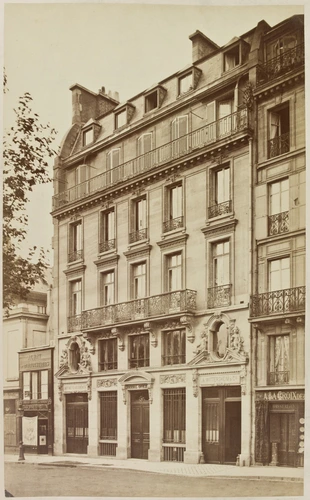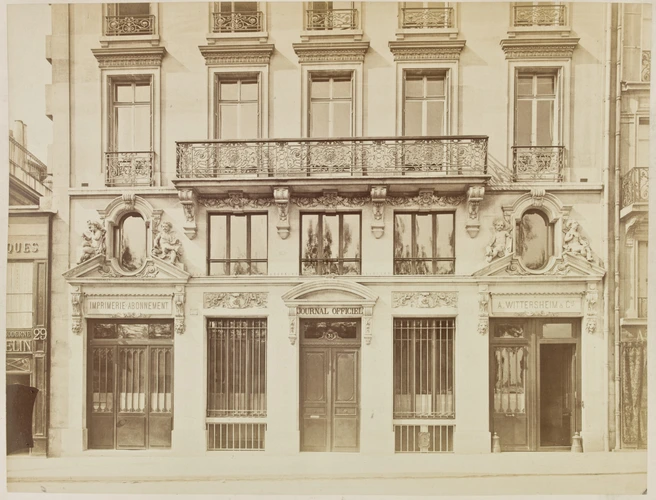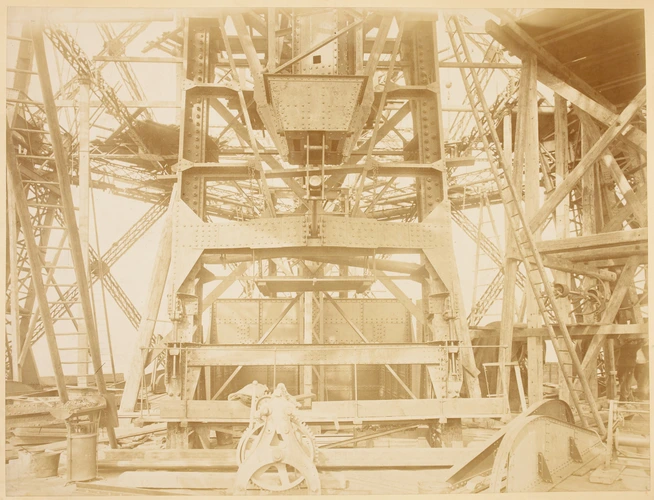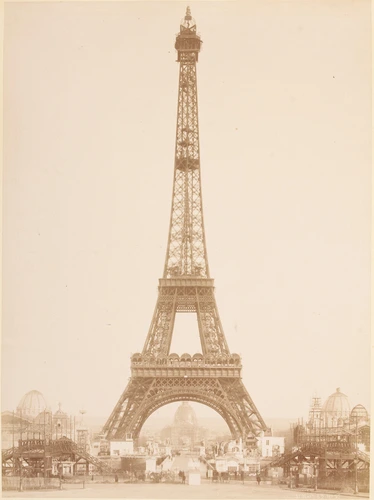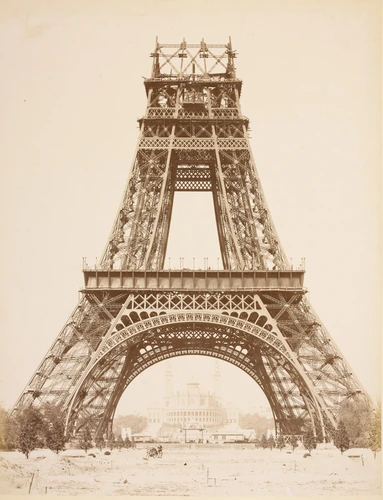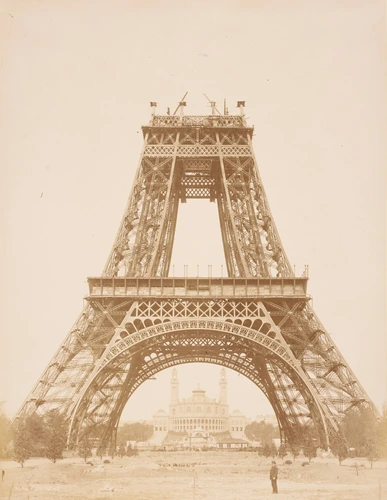Gustave Eiffel et un autre homme devant la pile n°4, le 18 juillet 1887
The construction of the Eiffel Tower in the heart of Paris for the Universal Exhibition of 1889 would demonstrate how photography had become the favourite medium for presenting metallic architecture. From 28 January 1887 when the foundations were laid, until it was completed with the flag hoisted on the top of the lightning conductor on 31 March 1889, the building site was the object of much photo-reportage.
From its opening, many photographers would go to the building site, following in the tradition of photographers of works of art dating back to the 1850s. Edouard Baldus (1813 –1889) was one of the most eminent of these French photographers. Having worked in partnership with Hyacinthe Delmaet until his death in 1862, Louis Emile Durandelle continued to work with his widow, Clémence, whom he soon married. So it was in the company name "Delmaet and Durandelle" that he took, among others, the photographs of the building works of Charles Garnier's Opera in Paris.
From the beginning of 1887 he set to work and made a series of plates taken from a distance, carefully dated, which would demonstrate how quickly the structure went up, from the laying of the foundations to its completion. By means of his frontal shots sometimes structured with tracery, triangles and pyramids, Louis-Emile Durandelle demonstrates his almost exclusive interest in shapes.



